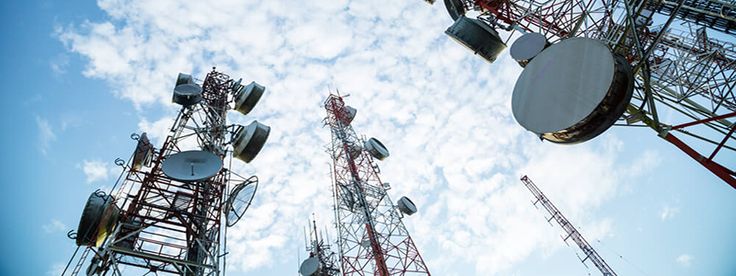
Introduction
The telecommunication industry has experienced transformative growth due to advancements in tower transmission and fiber optic technologies. These technologies form the backbone of modern communication networks, enabling high-speed data transfer, reliable connectivity, and broad coverage. This article explores the intricacies, benefits, and applications of both tower transmission and fiber optic technologies, providing a comparative analysis to understand their impact on the telecommunication landscape.
Understanding Tower Transmission Technology
Tower transmission technology, primarily associated with wireless communication, involves the use of radio towers to transmit signals over long distances. These towers are essential for mobile communication, broadcasting, and emergency services.
Key Components and Functionality
- Antennae and Transceivers: Located at the top of the towers, they transmit and receive radio signals.
- Base Stations: These stations connect the towers to the core network, facilitating communication between mobile devices and the broader network.
- Microwave Links: Used for backhaul, they connect remote towers to the main network, ensuring continuous coverage.
Advantages of Tower Transmission Technology
- Wide Coverage: Towers can cover vast areas, making them ideal for rural and remote locations.
- Scalability: Easy to scale by adding more towers to expand the network.
- Mobility Support: Essential for providing mobile connectivity, enabling users to stay connected on the move.
Applications of Tower Transmission Technology
- Mobile Communication: Towers are the foundation of cellular networks, supporting 2G, 3G, 4G, and now 5G technologies.
- Broadcasting: Used for TV and radio broadcasting, reaching wide audiences.
- Emergency Services: Critical for communication in disaster management and public safety.
Understanding Fiber Optic Technology
Fiber optic technology involves the transmission of data as light pulses through strands of glass or plastic fibers. This technology is renowned for its high-speed data transfer capabilities and is pivotal for modern telecommunication networks.
Key Components and Functionality
- Optical Fibers: Thin strands of glass or plastic that transmit data as light pulses.
- Optical Transmitters and Receivers: Convert electrical signals into light pulses and vice versa.
- Optical Amplifiers: Boost the light signals to extend the transmission distance without degrading quality.
Advantages of Fiber Optic Technology
- High Bandwidth: Capable of supporting extremely high data rates, essential for modern internet services.
- Low Latency: Minimal signal delay, crucial for real-time applications like online gaming and video conferencing.
- Resistance to Interference: Immune to electromagnetic interference, ensuring stable and reliable connections.
Applications of Fiber Optic Technology
- Internet Backbone: Forms the core infrastructure for global internet connectivity.
- Enterprise Networks: Used in data centers and corporate networks for high-speed data transfer.
- FTTH (Fiber to the Home): Provides high-speed internet access directly to residential users.
Comparative Analysis: Tower Transmission vs. Fiber Optic Technology
| Feature | Tower Transmission Technology | Fiber Optic Technology |
|---|---|---|
| Coverage | Wide, suitable for remote areas | Limited to urban and suburban areas |
| Data Transfer Speed | Moderate to high (5G can reach 10 Gbps) | Very high (up to 100 Gbps and beyond) |
| Latency | Higher due to wireless nature | Lower due to direct light transmission |
| Scalability | Easy to scale by adding towers | Scalability depends on laying new fiber |
| Interference | Prone to electromagnetic interference | Immune to electromagnetic interference |
| Infrastructure Cost | High initial cost for tower setup | High initial cost for fiber installation |
| Maintenance | Moderate to high due to exposure to elements | Lower, fibers are more durable and less exposed |
Future Trends in Telecommunication Infrastructure
Tower Transmission Technology
- 5G Expansion: Continued deployment of 5G towers to enhance mobile connectivity and support IoT applications.
- Small Cells and DAS: Deployment of small cells and Distributed Antenna Systems (DAS) to improve coverage and capacity in dense urban areas.
Fiber Optic Technology
- Wider FTTH Adoption: Increasing rollout of fiber-to-the-home services to provide ultra-fast internet to more households.
- Integration with 5G: Fiber will play a critical role in 5G networks, providing the necessary backhaul to support high-speed wireless connections.
Conclusion
Both tower transmission and fiber optic technologies are indispensable to the telecommunication industry, each offering unique benefits that cater to different aspects of connectivity. Tower transmission technology ensures broad, mobile coverage, crucial for areas where laying fiber might not be feasible. In contrast, fiber optic technology provides the high-speed, low-latency connections necessary for modern internet services and enterprise networks. As the demand for better connectivity grows, the integration and optimization of both technologies will drive the future of telecommunication infrastructure.
